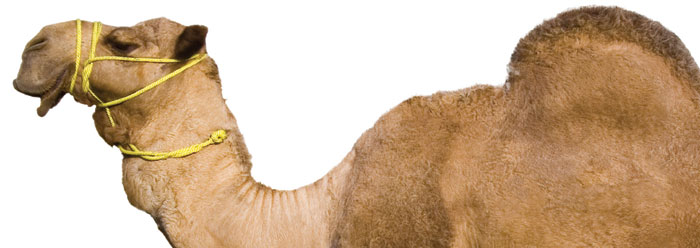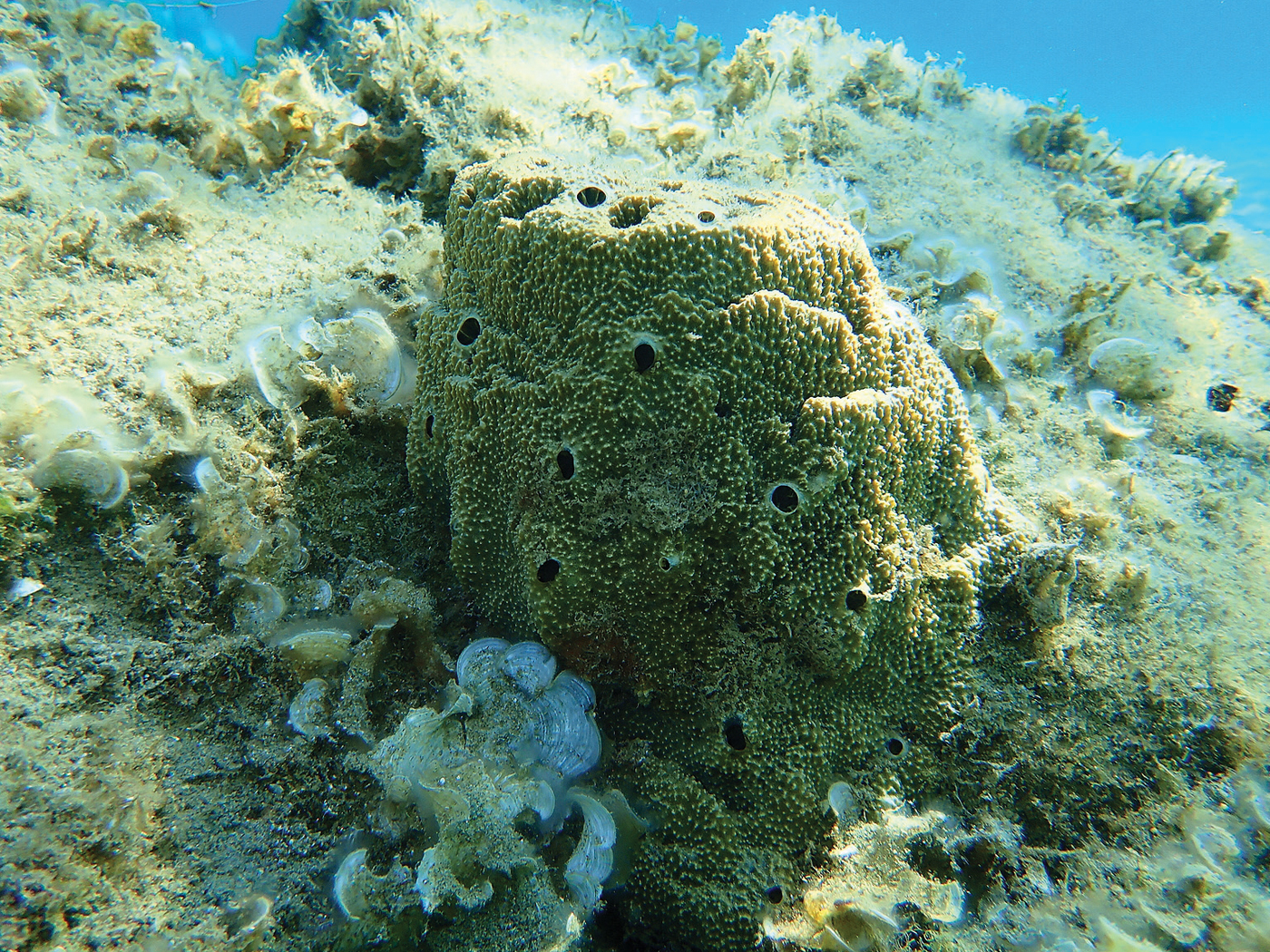The one-humped Camelus dromedarius has been called the ship of the desert--and for very good reasons. In a typical day, this 1,200+ pound animal can carry up to 400 pounds a hundred miles across the unforgiving desert without stopping for food or drink. Indeed, it has been known to go eight days without water.
Camels love grass and other plants that grow in the Arabian Desert. Their thickened lips are designed so that they can eat even the thorny, tough desert cactus. Their thick fur coat, shed once a year, can be woven into anything from tents to garments. In fact, camels would lose 50 percent more water if this coat didn't protect them from the sun.1 Camels are not friendly and when annoyed have been known to spit rank-smelling stomach contents.
Nevertheless, everything about the camel is fascinating--from the heavy-chain antibodies of its immune system to its iris, which contains a unique structure called the umbraculum (corpus nigra) that is designed to protect the delicate retina from the excessive glare of the desert. The double row of interlocking eyelashes screens sun and sand but still allows for clear vision. An inner eyelid acts much like a windshield wiper to brush errant sand grains from the eyeball.
The camel's valvular nostrils are designed to close tight and are lined with hairs for protection against wind-borne sand. Camel feet have two long toes with distinctive phalanges. The footpads are wide, with tough, leathery skin between thick soles. These naturally widen as the animal steps so it stays on top of shifting sands.
Evolutionists must insist that camels evolved from a non-camel ancestor over millions of years. But according to the fossil record, "the first camels appeared in late Eocene times as indicated by Poebrodon."2 Barbara Stahl states, "The first members of this tylopod [a suborder of even-toed ungulates including camels] assemblage appeared in the late Eocene, already subdivided into two lines."3 In 2006, BBC News reported that a fossilized camel discovered in Syria was twice as big as a modern one--but was still a camel.4 Paleontologists think it may have lived 100,000 to even a million years ago and was evidently killed by humans. As predicted by creation, the fossil record does not show a gradual evolutionary progression from non-camels to camels.
A popular legend states the camel's 80-pound hump is filled with water. In reality, it holds energy-rich fat the camel can use when there's no available vegetation. In a very complex process called fatty acid oxidation, the camel's body judiciously extracts fat from the hump, with water actually produced as a byproduct. As a fuel, a little fat goes a long way.
During extended treks, the dromedary camel can lose over 40 percent of its body water. In just ten minutes, it can drink 27 gallons of water, which immediately courses to its trillions of cells. Zoologists discovered that ten minutes after a camel has drunk 20 gallons of water, the stomach is empty. Water-storage chambers in the rumen (the first region) of its stomach have also been discovered. The oval-shaped, non-nucleated blood cells of the family Camelidae are unique among mammals. (Human blood cells are round and lack a nucleus.) Perhaps this design has something to do with these cells' ability to endure high osmotic variation, meaning they don't burst when all that water is suddenly introduced into the camel's system.
Camels--including the llama, a domesticated member of the camel family--are truly part of the world of animals whose design features magnificently reflect the mind of their Creator.
References
- Schmidt-Nielsen, K. 1977. Animal Physiology. New York: Cambridge University Press, 274.
- Colbert, E. H., M. Morales, and E. C. Minkoff. 2001. Colbert's Evolution of the Vertebrates, 5th ed. New York: Wiley-Liss, 425.
- Stahl, B. 1985. Vertebrate History: Problems in Evolution, rev. New York: Dover Publications, Inc., 517.
- Giant camel fossil found in Syria. BBC News. Posted on news.bbc.co.uk October 10, 2006, accessed July 20, 2010.
* Mr. Sherwin is Senior Science Lecturer at the Institute for Creation Research.
Cite this article: Sherwin, F. 2010. The Created Camel. Acts & Facts. 39 (9): 16.





















